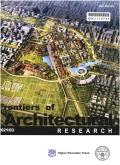从腹地粮仓到边陲山寨:中国合川钓鱼城在 1125-1279 年战争中的启动、建设和扩张
IF 3.6
1区 艺术学
0 ARCHITECTURE
引用次数: 0
摘要
13世纪,南宋在四川剧院的贺州规划并建造了钓鱼城要塞。这座堡垒因其对蒙古人长达36年的抵抗和1259年Möngke可汗的死亡而闻名。本研究以历史文献资料、考古报告再分析资料和田野调查资料为基础,探讨其起源、建设和变迁,梳理其从宋金战争(1125-1234)时期的内陆交通枢纽到宋蒙战争(1235-1279)时期的边疆要塞的转变过程,包括1130年代建关仓、1160 - 1170年代建新渝关堡、1130 - 1170年代建新渝关堡、1240年改建为避难所,1243年至1279年扩建为钓鱼城要塞。本文将空间分析与军事史相结合,探讨了在不同战争时期军事战略和地形的影响下,四川半岛遗址、“箕状”形态和炮台群是如何形成的。通过与同一时期欧亚大陆的防御工事的比较,说明该要塞是中国古代防御工事设计知识体系发展的缩影,特别是利用地形和海军的河防堡垒。本文章由计算机程序翻译,如有差异,请以英文原文为准。
From hinterland granary fort to frontier mountain fortress: Initiation, construction, and expansion of the Diaoyucheng Fortress, Hechuan, China, in the wars during 1125–1279
The Southern Song planned and constructed the Diaoyucheng Fortress at Hezhou of the Sichuan Theatre, during the 13th century. This fortress became famous for its 36-year resistance against the Mongols and the death of Möngke Khan in 1259. Based on historical documents and data from re-analysis of archaeological report and field survey, this study explores its initiation, construction and transition, to build a coherent narrative for its transformation from a hinterland transport hub during the Song-Jin War (1125–1234) to a frontier stronghold during the Song-Mongol War (1235–1279), which experiences the establishment of Zhuanban Granary in the 1130s, the construction of Xinyuguan Fort in the 1160s–1170s, the transformation into a refuge in 1240, and the expansion into the Diaoyucheng Fortress in 1243–1279. By combining spatial analysis with military history, this study discusses how the peninsular site, the “dustpan” form, and the fort cluster were formed under the influence of military strategies in different war periods and the topography in Sichuan. With the comparisons with the fortifications across Eurasia around the same period, this study illustrates this fortress epitomizes the development of knowledge system for fortification design in ancient China, especially the river defense fortress taking advantage of topography and navy.
求助全文
通过发布文献求助,成功后即可免费获取论文全文。
去求助
来源期刊

Frontiers of Architectural Research
ARCHITECTURE-
CiteScore
6.20
自引率
2.90%
发文量
430
审稿时长
30 weeks
期刊介绍:
Frontiers of Architectural Research is an international journal that publishes original research papers, review articles, and case studies to promote rapid communication and exchange among scholars, architects, and engineers. This journal introduces and reviews significant and pioneering achievements in the field of architecture research. Subject areas include the primary branches of architecture, such as architectural design and theory, architectural science and technology, urban planning, landscaping architecture, existing building renovation, and architectural heritage conservation. The journal encourages studies based on a rigorous scientific approach and state-of-the-art technology. All published papers reflect original research works and basic theories, models, computing, and design in architecture. High-quality papers addressing the social aspects of architecture are also welcome. This journal is strictly peer-reviewed and accepts only original manuscripts submitted in English.
 求助内容:
求助内容: 应助结果提醒方式:
应助结果提醒方式:


